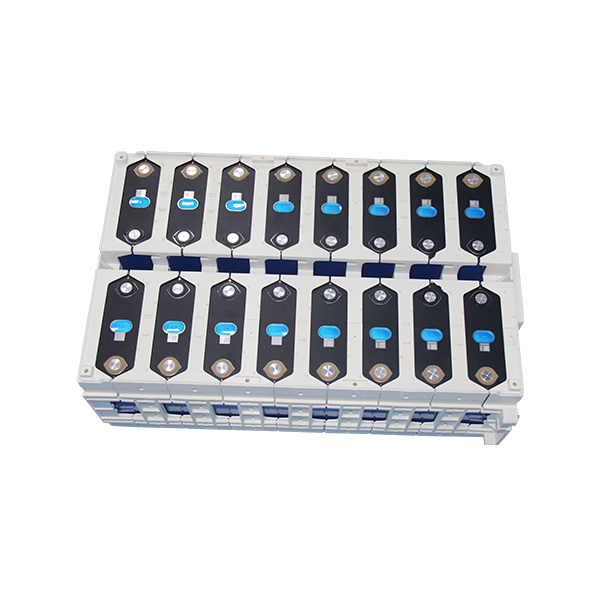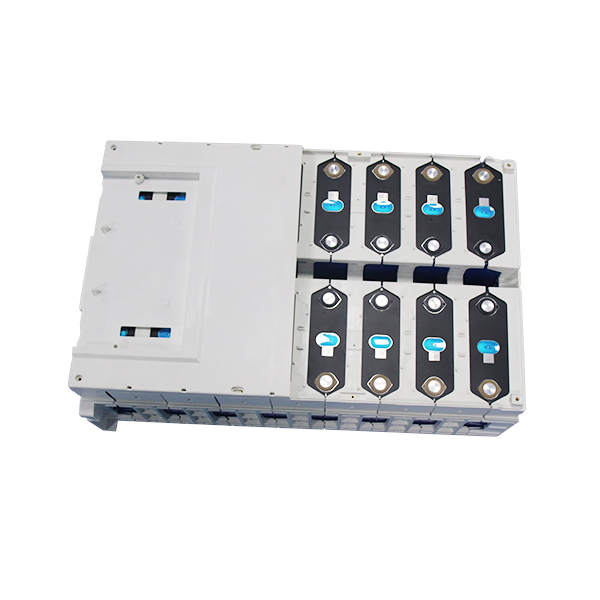Comparison of advantages and disadvantages of various energy storage systems
1. Mechanical energy storage
Mechanical energy storage mainly includes pumped storage, compressed air storage and flywheel storage.
(1) Pumped storage: When the power grid is in a low-lying state, the excess electricity is used as a liquid energy medium to pump water from a low-lying reservoir to a high-lying reservoir. When the power grid is at peak load, the water in the high-lying reservoir flows back to the lower reservoir to drive the turbine generator to generate electricity. The efficiency is generally around 75%, commonly known as 4 in and 3 out. It has daily regulation capabilities and is used for peak regulation and backup.
Disadvantages: Difficult site selection and high dependence on terrain; long investment cycle and high losses, including pumped storage losses + line losses; at this stage, it is also restricted by China's electricity price policy. Last year, more than 80% of China's pumped storage was exposed to the sun. In August last year, the National Development and Reform Commission issued a policy on pumped storage electricity prices. It may be better in the future, but it is definitely not the development trend of energy storage.
(2) Compressed air energy storage (CAES): Compressed air energy storage uses the surplus power of the power system during the low load period. The air compressor is driven by an electric motor to compress air into a closed large-capacity underground cave as an air storage chamber. When the system power generation is insufficient, the compressed air is mixed with oil or natural gas through a heat exchanger and burned, and then introduced into a gas turbine to generate power. There are many studies abroad and the technology is mature. China started a little later. It seems that Academician Lu Qiang has done a lot of research in this area, such as combined cooling and power generation.
Compressed air storage also has a peak-shaving function and is suitable for large-scale wind farms, because the mechanical work generated by wind energy can directly drive the compressor to rotate, reducing the intermediate conversion to electricity and thus improving efficiency.
Disadvantages: A major drawback is low efficiency. The reason is that the temperature of air rises when it is compressed, and the temperature of air decreases during the process of release and expansion. Part of the energy is lost in the form of heat energy during the compression of air, and it must be reheated before expansion. Natural gas is usually used as the heat source for heating air, which leads to reduced energy storage efficiency. Another conceivable disadvantage is that it requires large-scale gas storage devices, certain geological conditions, and relies on the burning of fossil fuels.
(3) Flywheel energy storage: It uses a high-speed rotating flywheel to store energy in the form of kinetic energy. When energy is needed, the flywheel slows down and releases the stored energy. The individual technologies of flywheel energy storage are basically available in China (but the gap with foreign countries is more than 10 years). The difficulty lies in developing new products with different functions according to different uses. Therefore, flywheel energy storage power supply is a high-tech product but its original innovation is insufficient, which makes it difficult to obtain national scientific research funding support.
Disadvantages: The energy density is not high enough and the self-discharge rate is high. If charging is stopped, the energy will be exhausted within a few to dozens of hours. It is only suitable for some market segments, such as high-quality uninterruptible power supplies.
2. Electrical energy storage
(1) Supercapacitor energy storage: A double-layer structure composed of activated carbon porous electrodes and electrolytes is used to obtain ultra-large capacitance. Unlike batteries that use chemical reactions, the charging and discharging process of supercapacitors is always a physical process. Short charging time, long service life, good temperature characteristics, energy saving and green environmental protection. There is nothing complicated about supercapacitors. It is just charging the capacitor, and the rest is a question of materials. The current research direction is whether it can achieve a very small area and a larger capacitance. The development of supercapacitors is still very fast. At present, new supercapacitors based on graphene materials are very popular.
As early as 2011, Tesla CEO Elon Musk said that the batteries of traditional electric vehicles are outdated and new cars with supercapacitors as the power system will replace them in the future.
Disadvantages: Compared with batteries, its energy density leads to relatively low energy storage under the same weight, which directly leads to poor endurance. It depends on the birth of new materials, such as graphene.
(2) Superconducting energy storage (SMES): a device for storing electrical energy made by using the zero resistance characteristic of superconductors. Superconducting energy storage systems generally include four major parts: superconducting coils, cryogenic systems, power regulation systems and monitoring systems. The development of superconducting material technology is the top priority of superconducting energy storage technology. Superconducting materials can be roughly divided into low-temperature superconducting materials, high-temperature superconducting materials and room-temperature superconducting materials.
Disadvantages: The cost of superconducting energy storage is very high (materials and low-temperature refrigeration systems), which greatly limits its application. Due to the constraints of reliability and economy, commercial application is still a long way off.
3. Electrochemical energy storage
(1) Lead-acid battery: It is a battery whose electrodes are mainly made of lead and its oxides and whose electrolyte is sulfuric acid solution. It is currently widely used in the world, with a cycle life of about 1,000 times and an efficiency of 80%-90%. It is cost-effective and is often used as an emergency power supply or backup power supply for power systems.
Disadvantages: If deep, rapid and high-power discharge occurs, the available capacity will decrease. It is characterized by low energy density and short life. This year, lead-acid batteries have greatly increased their cycle life by adding super-active carbon materials to the negative plate of lead-acid batteries.
(2) Lithium-ion battery: It is a type of battery with lithium metal or lithium alloy as the negative electrode material and a non-aqueous electrolyte solution. It is mainly used in portable mobile devices. Its efficiency can reach more than 95%, the discharge time can reach several hours, the number of cycles can reach 5,000 times or more, and the response is fast. It is the most practical battery with the highest energy among batteries and is currently the most used. In recent years, technology has been constantly upgraded, and positive and negative electrode materials have also been used in a variety of applications. The
mainstream power lithium batteries on the market are divided into three categories: lithium cobalt oxide batteries, lithium manganese oxide batteries, and lithium iron phosphate batteries. The former has a high energy density, but slightly poor safety, while the latter is the opposite. Domestic electric vehicles, such as BYD, currently mostly use lithium iron phosphate batteries. But it seems that foreigners are playing with ternary lithium batteries and lithium iron phosphate batteries?
Lithium-sulfur batteries are also very popular. They are a type of battery that uses sulfur as the positive electrode and metallic lithium as the negative electrode. Its theoretical specific energy density can reach 2600wh/kg, and its actual energy density can reach 450wh/kg. However, how to significantly improve the charge and discharge cycle life and safety of the battery is also a big problem.
Disadvantages: There are safety issues such as high price (4 yuan/wh), overcharging leading to heating and combustion, and charging protection is required.
(3) Sodium-sulfur battery: It is a secondary battery with metallic sodium as the negative electrode, sulfur as the positive electrode, and ceramic tube as the electrolyte membrane. The cycle can reach 4,500 times, the discharge time is 6-7 hours, the cycle round-trip efficiency is 75%, the energy density is high, and the response time is fast. At present, more than 200 such energy storage power stations have been built in Japan, Germany, France, the United States and other places, mainly used for load leveling, peak shifting and improving power quality.
Disadvantages: Because it uses liquid sodium, it runs at high temperatures and is easy to burn. In addition, if the power grid is out of power, a diesel generator is needed to help maintain the high temperature or help meet the conditions for cooling the battery.
(4) Liquid flow battery: It is a high-performance battery that uses the positive and negative electrolytes to separate and circulate separately. The power and energy of the battery are unrelated. The stored energy depends on the size of the storage tank. Therefore, it can store energy for several hours to several days, and the capacity can reach MW level. This battery has multiple systems, such as iron-chromium system, zinc-bromine system, sodium polysulfide bromine system and all-vanadium system, among which vanadium battery is the most popular.
Disadvantages: The battery is too big; the battery has too high requirements for the ambient temperature; the price is expensive (this may be a short-term phenomenon); the system is complex (there are pumps and pipelines, which is not as simple as non-liquid flow batteries such as lithium batteries).
Battery energy storage has more or less environmental problems.
4. Thermal energy storage
Thermal energy storage: In the thermal energy storage system , thermal energy is stored in the medium of an insulated container and converted back to electrical energy when needed, or it can be used directly without being converted back to electrical energy. Thermal energy storage is divided into sensible heat storage and latent heat storage. The amount of heat stored in thermal energy storage can be very large, so it can be used in renewable energy power generation.
Disadvantages: Thermal energy storage requires various high-temperature chemical heat working fluids, and the occasions of use are relatively limited.
5. Chemical energy storage
Chemical energy storage: Using hydrogen or synthetic natural gas as a carrier of secondary energy, using excess electricity to produce hydrogen, hydrogen can be used directly as an energy carrier, or it can be reacted with carbon dioxide to become synthetic natural gas (methane). In addition to being used for power generation, hydrogen or synthetic natural gas can also be used in other ways such as transportation. Germany is keen to promote this technology and has put demonstration projects into operation.
Disadvantages: The efficiency of the whole cycle is low, the efficiency of hydrogen production is only 40%, and the efficiency of synthetic natural gas is less than 35%.
Quoting the summary of predecessors:
PHS-pumped storage; CAES-compressed air; Lead-Acid: lead-acid battery; NiCd: nickel-cadmium battery; NaS: sodium-sulfur battery; ZEBRA: nickel-chloride battery; Li-ion: lithium battery; Fuelcell: fuel cell; Metal-air: metal-air battery; VRB: liquid flow battery; ZnbBr: liquid flow battery; PSB: liquid flow battery; SolarFuel: solar fuel cell; SMES: superconducting energy storage; Flywheel: flywheel; Capacitor/Supercapcitor: capacitor/supercapacitor; AL-TES: water/ice heat storage/cold system; CES: low temperature energy storage system ; HT-TES: heat storage system.
In general, current research and development are still mainly focused on supercapacitors and batteries (lithium batteries, liquid flow batteries). Breakthroughs in the field of materials are the key.
-
1What is a distributed energy storage system

2024-07-09
-
2What is the difference between high-pressure energy storage systems and traditional energy storage systems?

2024-07-09
-
3Comparison of advantages and disadvantages of various energy storage systems

2024-07-09
-
4Composition of energy storage system

2024-07-09
-
5Analysis of the advantages and disadvantages of commonly used batteries in energy storage systems

2024-07-09
-
6The role of energy storage systems in microgrids

2024-07-09
-
7What aspects do battery energy storage systems include

2024-07-09
-
8Huzhou Energy Storage Integrated Machine Manufacturer: Energy Storage System Equipment Safety

2024-07-09





